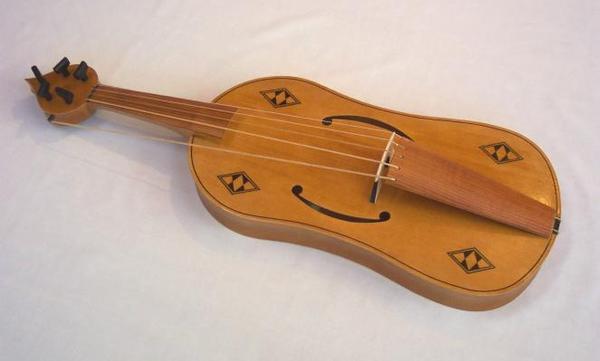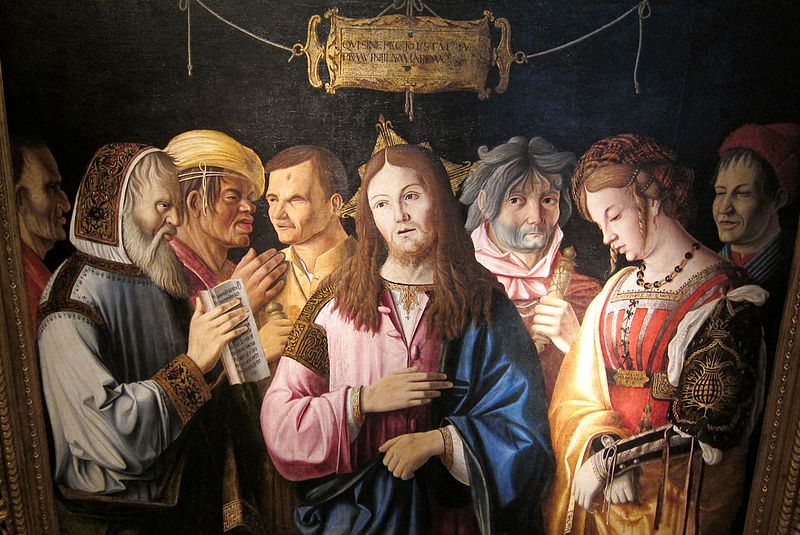The Middle Ages, or Medieval Times, in Europe was a long period of history from 500 AD to 1500 AD. It covers the time from the fall of the Roman Empire to the rise of the Ottoman Empire. This was a time of castles and peasants, guilds and monasteries, cathedrals and crusades. Middle Ages Music The Middle Ages saw the emergence of great changes in English culture including the music played during the Middle Ages. The violent times of the Dark Ages had led to a primitive society lacking in elegance or refinement. The Middle Ages is the middle period of the three traditional divisions of Western history: classical antiquity, the medieval period, and the modern period. The medieval period is itself subdivided into the Early, High, and Late Middle Ages. One way we learn about music in the Middle Ages is by examining Medieval art. There are instruments in the borders of many manuscripts of chant. This music is called plainchant or Gregorian chant. MEDIEVAL MUSICAL INSTRUMENTS: The lute was a popular instrument used by medieval musicians. Percussion instruments, drums, cymbals, bells. Check out Middle Ages Music by Medioevo Sound Rec on Amazon Music. Stream adfree or purchase CD's and MP3s now on Amazon. Learn middle ages renaissance music appreciation with free interactive flashcards. Choose from 500 different sets of middle ages renaissance music appreciation flashcards on Quizlet. Watch this Music History and Classical Period video; Music in Middle Ages and Renaissance, to study impact of medieval plainchant, Renaissance choral works Listen to your favorite songs from Medieval Music: The Western Music of Middle Ages by Medieval Music Academy Now. Stream adfree with Amazon Music Unlimited on mobile, desktop, and tablet. stream 41 middle ages playlists including medieval, Arany Zoltan, and instrumental music from your desktop or mobile device. During the medieval period or the Middle Ages from roughly 500 A. to approximately 1400, is when musical notation began as well as the birth of polyphony when multiples sounds came together and formed separate melody and harmony lines. Church (liturgical or sacred) music dominated the scene. Music in the Middle Ages, all cultures and epochs throughout history have music as a part of their culture for entertainment, devotional, or other purposes. The timing of Middle Ages music is generally agreed upon my music historians to encompass the time between approximately CE. History, Facts and interesting information about Medieval music, specifically, Medieval Musical Instruments Medieval Musical Instruments Medieval Musical instruments would be used by the musicians of the period including the Waits, Minstrels or Troubadours. There were three categories of musical instruments in the Middle Ages wind, string and percussion. Find great deals on eBay for music of the middle ages. Another early piece of written music that has survived was a round called Sumer Is Icumen In. It was written down by a monk around the year 1250. Much of the music in the Middle Ages (roughly ) was folk music played by working people who wanted to sing or dance. When people played instruments, they were usually playing for. Find free music mp3s to download and listen online. Scrobble while you listen and get recommendations on new music youll love, only from Last. Music History 102 a Guide to Western Composers and their Music from the Middle Ages to the Present You'll learn about the influence and power of the church in music and for Teachers for What Is Medieval Music? History, Church Music Composers Singing and Polyphony in the Middle. Musical performance The Middle Ages: The tradition of sung prayers and psalms extends into the shadows of early civilization. Such sacred singing was often accompanied by instruments, and its rhythmic character was marked. In the synagogue, however, the sung prayers were often unaccompanied. Ritual dance was excluded from the synagogue as the rhythmic character of sacred. The most important forms of the late middle ages were all French in origin and derived from the dance. The virelai was a vocal form with a long repeated refrain The rondeau had its origins in the. The Music of the Church Music was an integral part of Christian worship. The daily liturgy provided innumerable texts, all set to music in the style we call Gregorian chant. The church served as an important patron of the arts, specifically of music. During the late middle ages, before music had fully evolved into Renaissance music, the style known to many was Ars subtilior which was developed with French and Italian traditions. It was characterized by highly complex rhythm. middle ages music appreciation study guide by emaleebush includes 85 questions covering vocabulary, terms and more. Quizlet flashcards, activities and games help you improve your grades. Video created by Yale University for the course Introduction to Classical Music. We will cover a thousand years in musical evolution during this modules lectures! We'll start with the Middle Ages taking a look at its functional chants and dance. Liturgy Church Music used in worship The Church was an important patron to the arts. Music history 102: a guide to Western composers and their music from the Middle Ages to the present. ; This Web site takes a look at six distinct musical eras and compares them with their Western composers. Visitors explore the Middle Ages, the Renaissance, the Baroque Age, the classical period, the. Secular Music of the Middle Ages 3 Music in the 13th Century By the beginning of the 1200s, musical polyphony was in widespread use throughout Europe. Join us for a Soundtrack to the Middle Ages. One wellknown event in medieval Europe was a devastating pandemicthe Black Death. The plague began ripping through Eurasia in. Music History 102: The Middle Ages. The traditions of Western music can be traced back to the social and religious developments that took place in Europe during the Middle Ages, the years roughly spanning from about 500 to 1400 A. Magic in the Middle Ages from Universitat de Barcelona. Magical thought has always attracted human imagination. In this course we will introduce you to the Middle Ages through a wide conception of magic. Students will have an approach to medieval. Check out Medieval Music: The Western Music of Middle Ages by Medieval Music Academy on Amazon Music. Stream adfree or purchase CD's and MP3s now on Amazon. In English History, the Middle Ages were the middle period between the decline of the Roman Empire and the Renaissance. Gutenberg Press made distribution of music and musical theory possible on a wide scale. The music was written by monks as prayers called Gregorian Chants. Gregorian chants were performed in church during mass. The music of the middle ages is the earliest documented music. Music of the Early Middle Ages Music, like many of historys other achievements, can trace its origins back to the beginning of man. The early Middle Ages of Europe was a significant time period when music began to develop a more permanent aspect in peoples lives. The traditions of Western music can be traced back to the social and religious developments that took place in Europe during the Middle Ages, the years roughly spanning from about 500 to 1400 A. Because of the domination of the early Christian Church during this. Brief descriptions of seven men and one woman who composed sacred music during the Middle Ages, and whose work survives today. Step back into history get Medieval facts and information about music, composers and musicians in the Middle Ages. Medieval Life and Times Sitemap History of Europe The Middle Ages: The period of European history extending from about 500 to ce is traditionally known as the Middle Ages. The term was first used by 15thcentury scholars to designate the period between their own time and the fall of the Western Roman Empire. The period is often considered to have its own internal divisions: either early and late or early. Our new desktop experience was built to be your music destination. Listen to official albums more. Find album reviews, stream songs, credits and award information for English Songs of the Middle Ages Sequentia on AllMusic 1989 What were the methods and educational philosophies of music teachers in the Middle Ages and the Renaissance? What were the motivations of teacher and student? Contributors to this volume address these topics and otherincluding gender, social status, and the role of the. AdRev for a 3rd Party (on behalf of Arcadia Music); AdRev Publishing, and 1 Music Rights Societies Song Arcadia Esovision CD No EV72 Track 06 Knights Of The Grail Composer Wolfgang. Watch videoThe Middle Ages were a period of European history between the fall of the Roman Empire and the beginning of the Renaissance. Learn more about the art, culture and history of the Middle Ages. The term medieval music encompasses European music written during the Middle Ages. This era begins with the fall of the Roman Empire and ends in approximately the middle of the fifteenth century. The music of the church; The beginning of musical notation; The birth of polyphony; The rise of courtly culture; Musical Style: For such a vast period of time, there is a remarkable continuity in musical styles in the Middle Ages. In order to understand them better, it is a good idea to group their distinctive features within the broad categories of monophonic and polyphonic. The Middle Ages The Rise of Secular Music in the Late Middle Ages. Before the 12 th Century, the Roman Church had serious, formal hymns in Latin and as such not accessible to most people. These hymns were part of the ancient heritage of the English Church. Free Essay: Music has evolved too many different forms that we recognize today. We trace this development throughout time. Beginning in the middle ages, we The term Medieval Music speaks of the written and composed music during the era called the Middle Ages, from 500 C AD to 1400 C AD. Middle Ages began with the decay and fall of the Roman Empire. Music in the medieval times was secular and sacred at the same time and it was in chant form, mainly monophonic. Polyphonic chants were later developed. Middle Ages Music Instruments Gregorian Chant Gregorian chant is also known as plainchant or plainsong, and is a form of monophonic, unaccompanied singing, which was developed in the Catholic church, mainly during the period..











